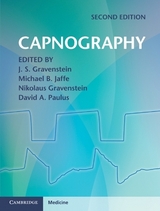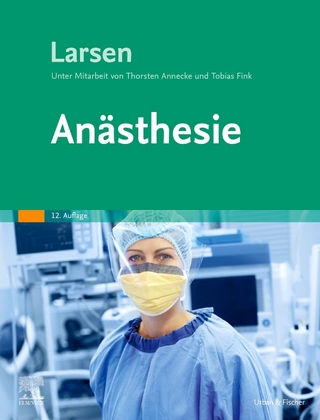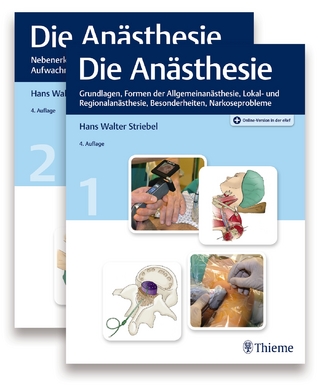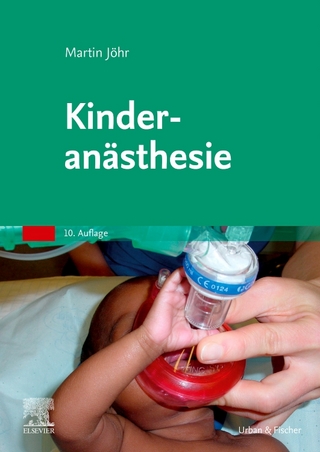
Capnography
Cambridge University Press (Verlag)
978-0-521-54034-6 (ISBN)
- Titel erscheint in neuer Auflage
- Artikel merken
Carbon dioxide in the respired gases gives evidence of life processes and the adequacy of breathing. The amount and concentration of the gas in the breath can be measured and monitored with instruments called capnographs, which are used whenever and wherever the breathing of a patient might be affected by disease or treatment. The book deals not only with the clinical application of these devices but also with the basic physiology of the generation and transport of carbon dioxide in the body. A technical section describes how the instruments work and a unique section tells the history of capnography. Over 40 contributors cover these aspects in the book, which has been edited by three experts in the field.
Simulation and patient safety related activities have been the main focus of Dr Gravenstein's work for the last 20 years, which includes many publications, among them texts on Capnography. He has received numerous national and international honours. Received Ph.D. in Biomedical Engineering from the University of Southern California in 1994. Prior to joining Novametrix, he had been employed since 1981 in the respiratory field, working for such companies as Beckman Instruments and Sensormedics. He is currently serving on international standards committees relating to anesthesia and respiratory equipment. David Paulus is Professor of Anesthesiology at the University of Florida. Trained initially as an engineer, he concentrates on anesthesia safety and monitoring issues. He is medical director of the operating room and home care for Shands at U.F., the teaching hospital at the University of Florida.
Contributors; Preface; Commonly used abbreviations; Introduction; Part I. Clinical Perspectives: 1. Clinical perspectives J. S. Gravenstein and D. A. Paulus; Section 1a. Ventilation: Adequacy of Breathing Assessment: 2. Capnography and respiratory assessment outside of the operating room E. B. Lobato and R. R. Kirby; Section 1b. Ventilation: Airway Management: 3. Airway management: pre-hospital setting B. Carmack, S. Silvestri, G. A. Ralls and J. L. Falk; 4. Capnography: airway management in the intensive care unit setting P. N. Betadpur and J. D. Truwit; 5. Airway management in the operating room D. G. Bjoraker; Section 1c. Ventilation: Monitoring: 6. Capnography during anesthesia J. M. Goldman, J.S. Gravenstein, D. A. Paulus and A. Hamburger; 7. Monitoring during mechanical ventilation J. Thompson and N. Craig; 8. Capnography in transport M. A. Frakes; 9. Capnography as a guide to ventilation in the field D. P. Davis; 10. Time and volumetric capnography in the neonates G. Schmalisch; 11. Capnography and sleep: technical aspects T. Schäfer; 12. A case for carbon dioxide monitoring in the sleep laboratory R. J. Thomas; 13. Capnography during sedation E. A. Bowe and E. F. Klein, Jr.; 14. Respiration at high- and low-pressure environments M. S. Ozcan and T. J. Gallagher; 15. Therapeutic use of ambulatory capnography A. E. Meuret, T. Ritz, B. Dahme and W. T. Roth; 16. Non-invasive end-tidal carbon dioxide monitoring in conjunction with non-invasive positive pressure ventilation L. Greenway; Section1d. Ventilation: Weaning: 17. End-tidal carbon dioxide monitoring in post-operative ventilator weaning J. Varon and P. E. Marik; 18. Capnography to optimize and minimize mechanical ventilation D. S. Hamel and I. M. Cheifetz; Section 1e. Special Situations: 19. Capnography and adjuncts of mechanical ventilation U. Lucangelo, F. Bernabè, A. Gullo and L. Blanch; Section 1f. Circulation: Transport of Carbon Dioxide and Pulmonary Blood Flow: 20. Cardiopulmonary resuscitation D. C. Cone, J. C. Cahill and M. A. Wayne; 21. Embolism J. T. Anderson; 22. Pulmonary blood flow monitoring: noninvasive cardiac output R. Dueck; 23. Partial pressure end-tidal carbon dioxide monitoring for patients with acute respiratory distress syndrome: effects of physiologic dead-space volume M. J. Banner; 24. The basis for capnometric monitoring in shock K. R. Ward; Section 1g. Metabolism: Carbon Dioxide Production: 25. Carbon dioxide production and anesthesia D. Wilner and C. Weissman; Section 1h. Organ Effects: 26. Hypocapnia and hypercapnia: tissue- and organ-specific effects O. Akça; Part II. Physiological Perspectives: 27. Physiological perspectives: introduction M. B. Jaffe; 28. Carbon dioxide pathophysiology T. E. Morey; 29. Acid-base balance A. Isenberg and P. Boysen; 30. Ventilation/perfusion abnormalities and capnography A. Gabrielli and A. J. Layon; 31. Capnographic measures U. Lucangelo, A. Gullo, F. Bernabè and L. Blanch; 32. Anatomical and physiological basis of volume capnography studied by the single path model P. W. Scherer and K. Zhao; Part III. Historical Perspectives: 33. Historical perspectives: introduction M. B. Jaffe; 34. Brief history of time and volumetric capnography M. B. Jaffe; 35. The first years of clinical capnography, B. Smalhout; 36. Volumetric capnography: the early days R. Fletcher; 37. Excerpts from an interview with Max Liston, Interviewed by D. C. Brock and G. E. Gallwas; Part IV. Technological Perspectives: 38. Technical perspectives: introduction M. B. Jaffe; 39. Technical specifications and standards D. E. Supkis; 40. Carbon dioxide measurement M. B. Jaffe; 41. Flow measurement M. B. Jaffe; 42. Combining flow and carbon dioxide M. B. Jaffe and J. Orr; Appendix: patterns of time-based capnograms; Index.
| Erscheint lt. Verlag | 4.11.2004 |
|---|---|
| Zusatzinfo | 49 Tables, unspecified; 208 Line drawings, unspecified |
| Verlagsort | Cambridge |
| Sprache | englisch |
| Maße | 194 x 254 mm |
| Gewicht | 1204 g |
| Themenwelt | Medizin / Pharmazie ► Medizinische Fachgebiete ► Anästhesie |
| ISBN-10 | 0-521-54034-8 / 0521540348 |
| ISBN-13 | 978-0-521-54034-6 / 9780521540346 |
| Zustand | Neuware |
| Informationen gemäß Produktsicherheitsverordnung (GPSR) | |
| Haben Sie eine Frage zum Produkt? |
aus dem Bereich



